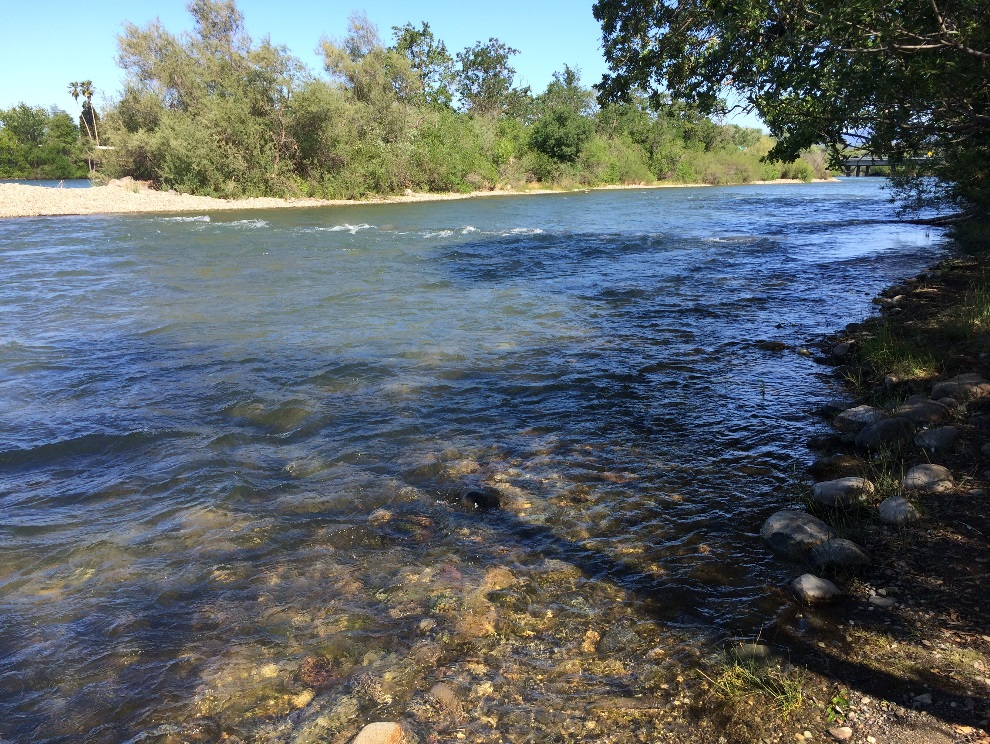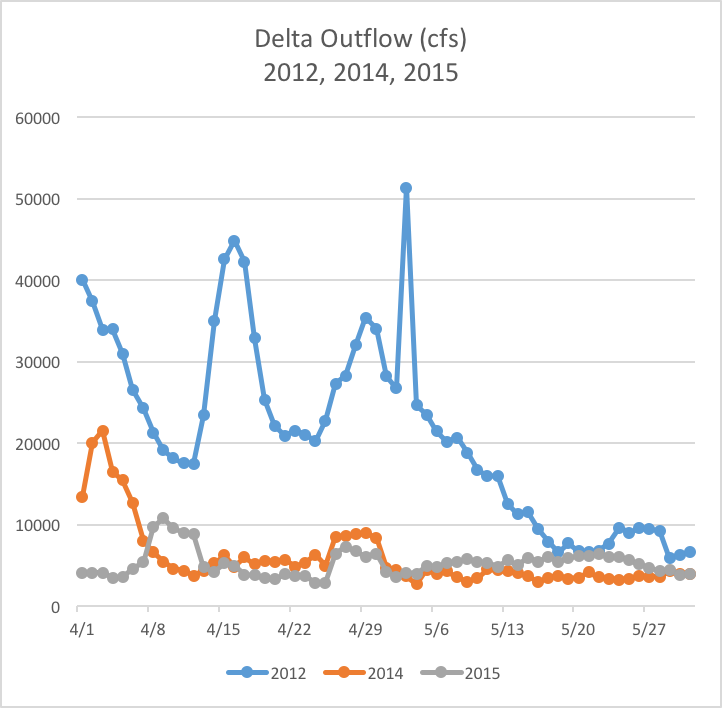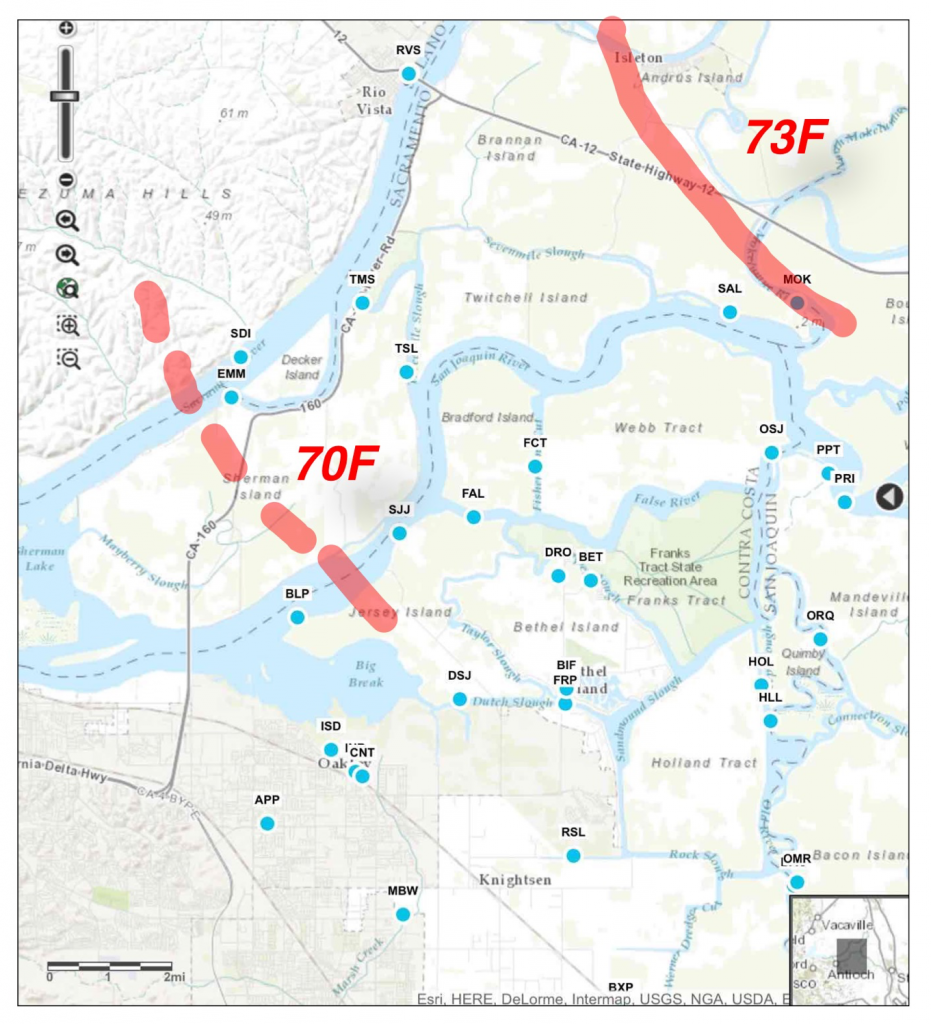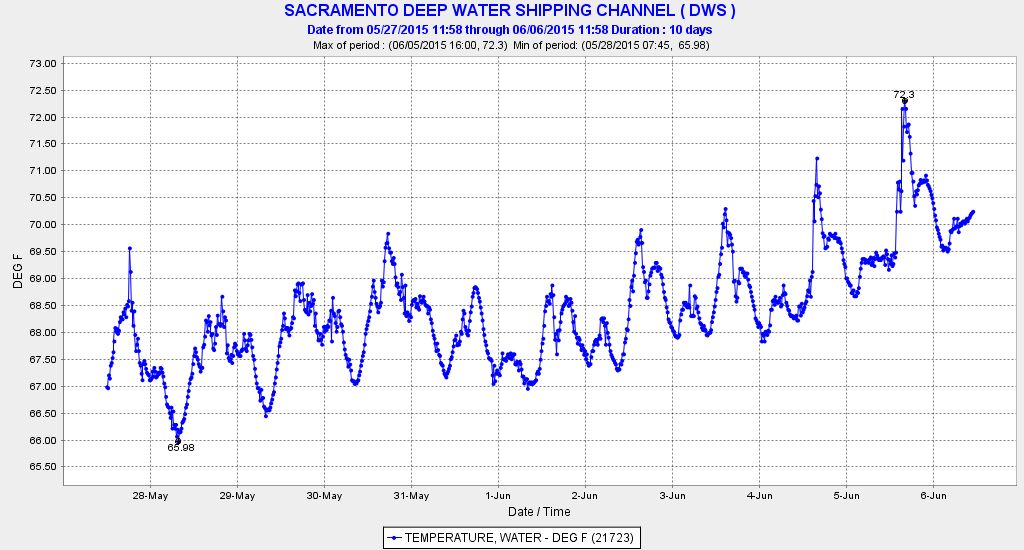Previously… Part 1: Central Valley Salmon and Steelhead Hatchery Program Reform & Part 2: Hatchery Reform
Contingency Release Strategies for Coleman National Fish Hatchery Juvenile Fall Chinook Salmon due to Severe Drought Conditions in 20141
“Substantial data are available to show that transporting Coleman NFH fall Chinook salmon to the west Delta would likely produce substantial increases in ocean harvest opportunity but will also result in a significant increased rate of straying as they mature and return to freshwater. The levels of straying anticipated are likely to compromise some of the hatchery objectives, including contributions to harvest in the upper Sacramento River and the ability to collect adequate broodstock at the Coleman NFH in future years, particularly 2016. Although the levels of straying anticipated from releasing fish into the West Delta are unfavorable, this release strategy may in fact represent the best possible option when faced with the possibility of losing the entire 2013 production year. In future years, under less extreme conditions, the standard protocol for releasing Chinook from the Coleman NFH will continue to be on-site releases into Battle Creek.”
There are two measures the Coleman Hatchery could adopt that would help to alleviate the straying problem associated with out-planting hatchery production. (1) Barging smolts to the Bay from Knights Landing area (above the mouth of the Feather River) would help imprint smolts on the Sacramento River. During barging, water is continually circulated through the fish tanks unlike during trucking. (2) Fry out-planting to the Yolo Bypass (Sacramento River source-water) would produce more natural smolts that would be less inclined to stray.
“The 1988-1992 period represents the most recent extended severe drought in the Central Valley. At that time the Service released nearly the entire production of fall Chinook to off-site locations to circumvent poor conditions in the lower Sacramento River and Delta. Conditions in the river and Delta were poorest during the spring of 1992 emigration season. Releases from the Coleman NFH into the West Delta in 1992 survived at a rate nearly 18 times higher than releases into Battle Creek, with a commensurate increase in ocean harvest. Owing to their markedly improved survival, West Delta releases from that same year also outperformed on-site releases in regards to returns to the hatchery. More than twice as many adult returns to the Coleman NFH in 1994 resulted from West Delta releases as compared to releases conducted into Battle Creek. If the Coleman NFH had released all production on-site in 1992 the hatchery would not have had sufficient returns of adults to meet production targets in 1994.”
Similar results are likely for the 2012-2015 drought. Despite these facts, there are many people who believe straying is unacceptable. These individuals hold out hope that “wild” Fall Chinook may someday recover in the Valley. To keep up such hopes we should adopt the two recommendations above, as well as continue to improve spawning and rearing habitats in the rivers. Our best hope for wild native genetic fish recovery is to incorporate natural habitats above the dams in trap-and-haul projects. At present, Fall Run Chinook and Steelhead are generally not being actively considered for these new programs.
“Implementation and Contingencies: The Service and California Department of Fish and Wildlife (CDFW) have coordinated a schedule for the delivery (trucking) of hatchery production from the five state and federal hatcheries to acclimation net pens in the west Delta. However, if a precipitation event occurs in March or April, environmental conditions/criteria may be re-assessed and if none of the criteria above are forecast to occur, then groups of Coleman NFH fall Chinook salmon juveniles meeting appropriate size criteria for an on-site release (i.e., at or about 90/lb) may be released into Battle Creek per usual procedures. Further, criteria are expected to be assessed during the three following periods: mid-March, first of April, and mid-April. If criteria above are not met or expected to be met within a three week window, then on-site releases of appropriately sized fish will also occur shortly thereafter. Criteria may also be re-assessed one to two weeks prior to scheduled trucking dates and, again, if criteria above are not met or not predicted to be met within a three week window, then on-site releases of those groups of fish will be considered to instead occur on-site shortly thereafter. If during any of these assessments, existing/predicted conditions are expected to meet the criteria triggering consideration of the alternative release strategy, then preparations will begin, continue, or be implemented to truck appropriate groups of fish to the acclimation net pens in the west Delta as scheduled.”
These drought-year plans focus on early river releases and trucking to the west Delta. Both of these options will lead to poor survival. Instead, fry-fingerling out-planting to the Yolo Bypass, Sutter Bypass, and Bay-Delta should be considered for Jan-Feb. Barging to the Bay should be considered for Mar-Apr smolt releases. If trucking is retained, it should be further to the west (e.g., Collinsville or Pittsburg), not Rio Vista which is in the zone of influence of the South Delta Export pumps.
Hatchery Selection. Oregon Department of Fish and Wildlife. 2011.2
“Our results support the finding outlined by others that even contemporary hatchery practices (e.g. using wild brood stock, pairwise matings) can produce fish that have lowered reproductive success in the wild. This evidence suggests that hatcheries may need to consider how to replicate the intricacies of natural breeding behaviors if they are to produce fish for supplementation programs that truly help recover endangered populations.”
In-hatchery replication of natural breeding behavior is another complicated subject worth further consideration in Central Valley hatchery programs. For more on the subject see: http://www.hatcheryandwild.com .
This post is part of a 4 part series on hatchery reform, check back into the California Fisheries Blog over the next week for Part 4.






